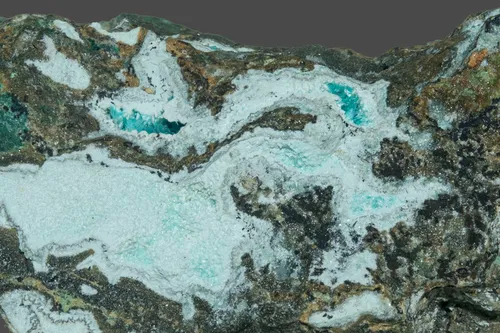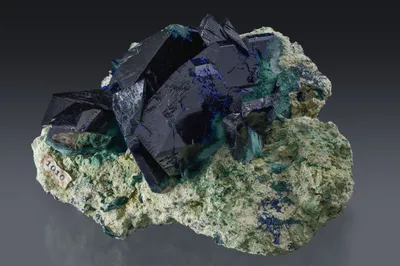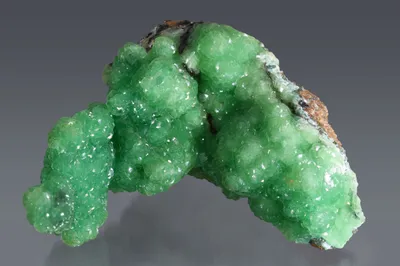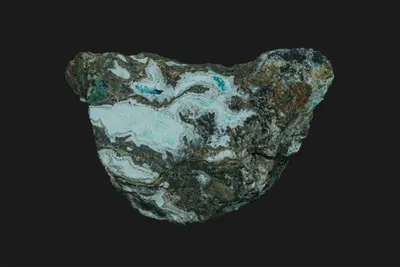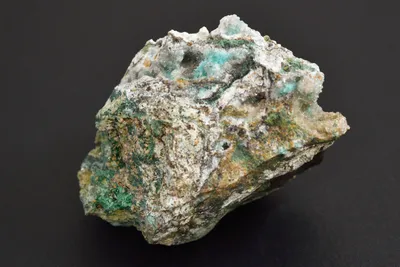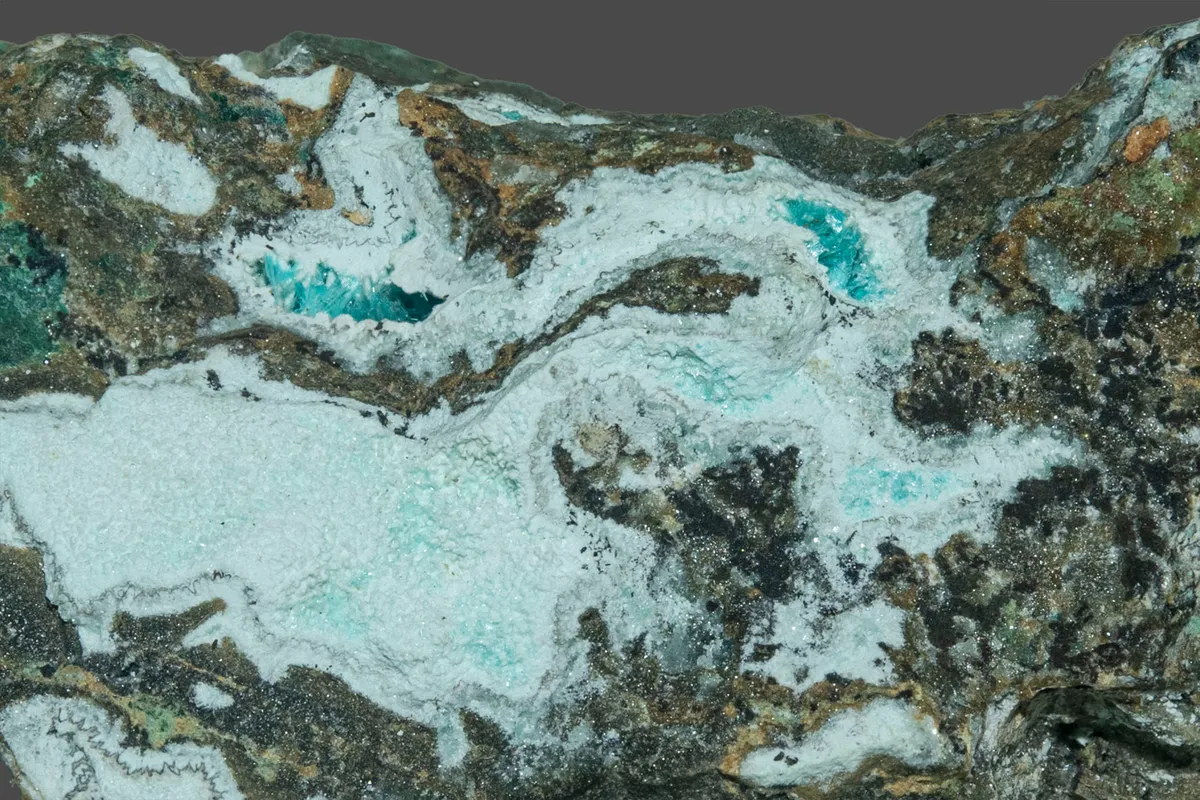
Image Credit: Malcolm Southwood
Mineral Species
Aurichalcite
Type Locality
No
Composition
(Zn,Cu2+)5(CO3)2(OH)6
Crystal System
Monoclinic
Status at Tsumeb
Confirmed
Abundance
Somewhat rare
Distribution
First and second (?) oxidation zones
Paragenesis
Supergene
Entry Number
Species; TSNB36
General Notes
Aurichalcite was relatively common in the upper portion of the first oxidation zone and particularly so in the open pit workings. It is, however, a very rare mineral at depth and its occurrence in the deeper oxidation zones is not unequivocal.
In the near-surface environment aurichalcite occurred in a distinctive paragenesis with hemimorphite and hydrozincite (Maucher 1908a,b; Gebhard 1999). Less commonly, it has been found associated with smithsonite. Typically, it occurs as pale green to sky-blue and turquoise-blue acicular crystals and crusts (Pinch and Wilson, 1977).
Associated Minerals
azurite; hemimorphite; hydrozincite; quartz; smithsonite
Pseudomorphs
Aurichalcite has been reported to form pseudomorphs after azurite (rare; Weber, 1977).
